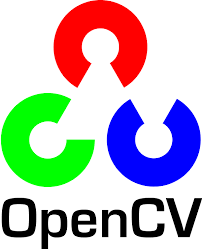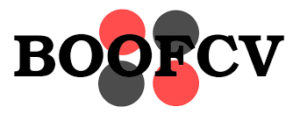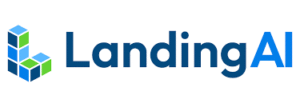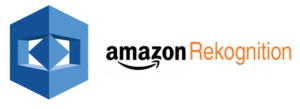Computer vision software enables machines to interpret and analyze visual data, replicating human vision through artificial intelligence. These tools are used across industries for tasks such as image recognition, object tracking, motion detection, and facial recognition. With the rise of machine learning and edge computing, the capabilities of modern computer vision platforms have expanded significantly, supporting applications in healthcare, manufacturing, retail, transportation, and beyond.
This article presents a curated list of top computer vision software tools. Each entry highlights the key features, supported use cases, and unique capabilities of the software to help businesses and developers choose the right solution for their needs.

1. AI Superior
At AI Superior, we specialize in building advanced computer vision software that transforms raw image and video data into actionable insights. Since launching in 2019, our team has been focused on helping organizations deploy AI-powered visual systems that meet real business needs. Whether it’s for automated quality control, surveillance analytics, or intelligent image processing, we deliver solutions that are both technically rigorous and highly scalable.
Our strength lies in our ability to convert complex AI concepts into operational software, and computer vision is one of our core focus areas. We bring together a multidisciplinary team of PhD-level data scientists, machine learning engineers, and software developers to create custom visual intelligence systems tailored to each client’s objectives. Every project is managed through a full life cycle framework to reduce risks and ensure the delivered software integrates seamlessly with existing operations.
We don’t stop at development. We believe that empowering our clients to understand, manage, and evolve their computer vision software is essential for long-term success. Through workshops, AI strategy sessions, and hands-on training, we make sure clients are equipped not just with the solution, but with the capability to grow it. This approach has allowed us to maintain a strong record of successful deployments and long-term client relationships.
Key Highlights:
- Founded in 2019 by Dr. Ivan Tankoyeu and Dr. Sergey Sukhanov
- Focused on building custom computer vision software for diverse industries
- Proven expertise in managing AI project risks and aligning with business goals
- Interdisciplinary team with PhD-level scientists and engineers
- Strong track record in delivering PoC and production-ready AI solutions
Services:
- AI and Data Strategy Development
- Custom Computer Vision Software Development
- AI-Powered Process Optimization
- AI Use Case Discovery and Validation
- Generative AI Integration
- Technical Workshops and Team Training
Contact Information:
- Website: aisuperior.com
- Address: Robert-Bosch-Str.7, 64293 Darmstadt, Germany
- Contact Email: info@aisuperior.com
- Phone Number: +49 6151 3943489
- LinkedIn: www.linkedin.com/company/ai-superior
- Twitter: x.com/aisuperior

2. OpenCV
OpenCV is an open-source computer vision library that provides a wide range of tools for image and video analysis. It includes over 2,500 optimized algorithms for tasks such as object detection, facial recognition, and motion tracking. The library supports multiple programming languages, including C++, Python, and Java, and is compatible with various operating systems.
Designed for real-time applications, OpenCV facilitates the development of computer vision projects by offering functionalities like image filtering, geometric transformations, and camera calibration. It is widely used in academic research and commercial applications due to its extensive documentation and active community support.
Key Highlights:
- Open-source computer vision and machine learning software library
- Offers tools for real-time image processing and object detection
- Provides extensive documentation and tutorials for developers
Contact and Social Media Information:
- Website: opencv.org
- E-mail: admin@opencv.org
- Twitter: x.com/opencvlibrary
- Facebook: www.facebook.com/opencvlibrary
![]()
3. Cognex VisionPro
Cognex VisionPro is a machine vision software designed for industrial automation tasks. It offers a suite of tools for image analysis, including pattern recognition, blob analysis, and edge detection. The software supports both 2D and 3D vision applications, enabling precise inspection and measurement in manufacturing processes.
VisionPro provides a graphical programming environment, allowing users to develop and deploy vision applications without extensive coding. It integrates with various hardware platforms and supports communication protocols commonly used in industrial settings. The software is utilized in sectors such as automotive, electronics, and pharmaceuticals for quality control and process optimization.
Key Highlights:
- Specializes in machine vision systems and industrial barcode readers
- Offers solutions for manufacturing automation and quality control
- Provides a range of vision sensors and software tools
Contact and Social Media Information:
- Website: www.cognex.com
- Address: One Vision Drive, Natick, MA 01760-2059
- Phone: +1 508-650-3000
- E-mail: Not provided
- LinkedIn: www.linkedin.com/company/cognex-corporation

4. Viso Suite
Viso Suite is an end-to-end computer vision platform that enables the development, deployment, and management of AI vision applications. It supports functionalities like object detection, image segmentation, and facial recognition. The platform offers a no-code interface, allowing users to build applications without extensive programming knowledge.
Designed for scalability, Viso Suite facilitates the integration of computer vision solutions across various devices and environments. It provides tools for data collection, model training, and real-time monitoring, streamlining the deployment process. The platform is used in industries such as retail, manufacturing, and transportation for tasks like surveillance, quality inspection, and inventory management.
Key Highlights:
- Offers an end-to-end computer vision infrastructure platform
- Enables building, deploying, and scaling AI vision applications
- Provides tools for visual programming and edge device deployment
Contact and Social Media Information:
- Website: viso.ai
- LinkedIn: www.linkedin.com/company/visoai
- Twitter: x.com/viso_ai
5. TensorFlow
TensorFlow is an open-source machine learning framework developed by Google. It offers a comprehensive ecosystem for building and deploying machine learning models, including tools for data preprocessing, model training, and inference. TensorFlow supports various platforms, enabling deployment on servers, edge devices, and mobile applications.
In the realm of computer vision, TensorFlow provides functionalities for image classification, object detection, and image segmentation. It includes pre-trained models and supports transfer learning, facilitating the development of custom applications. TensorFlow’s modular architecture allows for flexibility in designing and optimizing machine learning workflows.
Key Highlights:
- Open-source machine learning framework developed by Google
- Supports a wide range of tools and libraries for AI development
- Offers extensive community support and resources
Contact and Social Media Information:
- Website: www.tensorflow.org
- LinkedIn: www.linkedin.com/showcase/tensorflowdev
- Twitter: x.com/tensorflow

6. BoofCV
BoofCV is an open-source computer vision library written in Java. It offers functionalities for image processing, feature detection, and geometric vision. BoofCV supports tasks like camera calibration, structure-from-motion, and fiducial detection.
Designed for real-time applications, BoofCV provides a modular architecture that allows for easy integration and customization. It is utilized in academic research and embedded systems development, offering a balance between performance and ease of use.
Key Highlights:
- Open-source Java library for real-time computer vision
- Offers tools for image processing, camera calibration, and feature detection
- Suitable for both academic and commercial use
Contact and Social Media Information:
- Website: boofcv.org

7. Basler
The Basler pylon Software Suite is designed for configuring and controlling Basler cameras. It includes drivers, APIs, and tools for image acquisition and processing. The suite supports various camera interfaces and provides functionalities for camera calibration and image optimization.
Pylon’s architecture allows for seamless integration with machine vision applications, facilitating tasks such as quality inspection and object recognition. It supports programming languages like C++, C#, and Python, enabling developers to build customized vision solutions.
Key Highlights:
- Manufacturer of high-quality digital cameras for industrial applications
- Offers a wide range of camera models for various industries
- Provides software and tools for image acquisition and processing
Contact and Social Media Information:
- Website: www.baslerweb.com
- Address: 855 Springdale Dr. Suite 203, 19341 Exton, PA, USA
- Phone: +1 610 280 0171
- E-mail: sales.usa@baslerweb.com
- LinkedIn: www.linkedin.com/company/basler-ag
- Twitter: x.com/Basler_AG

8. LandingLens
LandingLens is a computer vision platform developed by Landing AI. It offers tools for creating, training, and deploying deep learning models without requiring extensive coding expertise. The platform supports tasks like defect detection, object classification, and image segmentation.
LandingLens provides a user-friendly interface for data labeling, model training, and performance evaluation. It supports deployment on cloud and edge devices, enabling scalability across different operational environments. The platform is used in industries such as manufacturing and logistics for quality control and automation.
Key Highlights:
- Provides AI solutions for manufacturing and industrial applications
- Offers tools for visual inspection and quality control
- Focuses on enabling companies to adopt AI technologies effectively
Contact and Social Media Information:
- Website: landing.ai
- Address: 195 Page Mill Rd, Palo Alto, CA. 94306
- Phone: +1 650-779-5660
- E-mail: hello@landing.ai
- LinkedIn: www.linkedin.com/company/landing-ai
- Twitter: x.com/landingAI
- Facebook: www.facebook.com/people/Landing-AI/100068095180134
- Instagram: www.instagram.com/landingai

9. Neptune.AI
Neptune.ai is a metadata store for MLOps, focusing on tracking and managing machine learning experiments. It allows users to log metrics, parameters, and artifacts, facilitating collaboration and reproducibility in model development. Neptune integrates with various machine learning frameworks and tools.
In computer vision projects, Neptune.ai assists in monitoring model performance, comparing experiments, and organizing datasets. It provides a centralized platform for managing the lifecycle of machine learning models, enhancing productivity and transparency in development workflows.
Key Highlights:
- Provides a metadata store for MLOps, focusing on experiment tracking
- Helps teams manage machine learning experiments and model versions
- Offers integrations with various ML frameworks and tools
Contact and Social Media Information:
- Website: neptune.ai
- LinkedIn: www.linkedin.com/company/neptuneai
- Twitter: x.com/neptune_ai
- Facebook: www.facebook.com/neptuneAI

10. Roboflow
Roboflow is a platform that streamlines the process of building and deploying computer vision models. It offers tools for data annotation, preprocessing, and augmentation. Roboflow supports various machine learning frameworks and facilitates model training and deployment.
The platform allows users to manage datasets, train models, and deploy them to production environments, including edge devices and cloud services. Roboflow is utilized in applications such as object detection, classification, and segmentation across industries like agriculture, retail, and healthcare.
Key Highlights:
- Offers tools for building and deploying computer vision models
- Provides data annotation, model training, and deployment services
- Supports various industries with custom vision solutions
Contact and Social Media Information:
- Website: roboflow.com
- LinkedIn: www.linkedin.com/company/roboflow-ai
- Twitter: x.com/roboflow

11. Azure Computer Vision
Azure Computer Vision is part of Microsoft’s suite of cognitive services that enables analysis of visual data through pre-trained machine learning models. It can identify objects, extract printed and handwritten text using OCR, and describe image content in natural language. The service also detects spatial relationships between elements in an image and supports content tagging and brand detection.
The service can be accessed via REST APIs or SDKs compatible with multiple programming languages. It supports integration with other Azure services like Logic Apps, Power BI, and Azure Functions, enabling automated workflows and real-time visual analysis. Azure Computer Vision is capable of running in cloud environments or in containers for edge deployment, allowing flexible use across different infrastructures.
Key Highlights:
- Part of Microsoft’s Azure AI services
- Offers capabilities like image analysis, OCR, and spatial analysis
- Provides scalable and secure computer vision solutions
Contact and Social Media Information:
- Website: azure.microsoft.com
- LinkedIn: www.linkedin.com/company/Microsoft
- Twitter: x.com/Microsoft
- Facebook: www.facebook.com/Microsoft

12. Luxand
Luxand FaceSDK is a facial recognition and tracking software development kit used to integrate face-based analytics into various applications. It detects faces in images and video streams, extracts landmarks like eyes and mouth, and estimates head position and orientation. The SDK can identify faces from databases and compare images for identity matching, making it applicable in authentication systems and surveillance tools.
The SDK supports integration with applications built in C++, C#, Java, and Delphi, and is compatible with Windows, Linux, and mobile platforms. Developers use it to build systems for biometric access control, user analytics, and photo enhancement. It can operate with live camera input or batch process images.
Key Highlights:
- Specializes in face recognition and biometric identification technologies
- Offers a range of SDKs and APIs for developers
- Provides solutions for security, entertainment, and mobile applications
Contact and Social Media Information:
- Website: www.luxand.com
- Address: 815 N. Royal St. Suite 202, Alexandria, VA, 22314, USA
- Phone: +1 800-471-5636
- E-mail: info@luxand.com
- LinkedIn: www.linkedin.com/company/luxand-inc.

13. Amazon Rekognition
Amazon Rekognition is a cloud-based service that provides image and video analysis capabilities. It uses deep learning models to perform tasks such as object and scene detection, facial comparison, label tagging, and unsafe content identification. It can detect up to 100 faces in a single image, locate facial landmarks, and determine expressions or states like eyes open or smiling.
The service supports both asynchronous video analysis and real-time stream processing. It integrates with other AWS services, such as Lambda and S3, for building scalable pipelines and automation. Rekognition is commonly used for security, user verification, media indexing, and retail analytics. It includes face indexing for search and tracking across large datasets, making it suitable for systems that require persistent visual identity management.
Key Highlights:
- AWS service that provides image and video analysis
- Offers features like facial analysis, object detection, and text recognition
- Integrates with other AWS services for scalable deployment
Contact and Social Media Information:
- Website: aws.amazon.com
- LinkedIn: www.linkedin.com/company/amazon-web-services
- Twitter: x.com/awscloud
- Facebook: www.facebook.com/amazonwebservices
- Instagram: www.instagram.com/amazonwebservices

14. Voxel51
FiftyOne by Voxel51 is an open-source tool for managing, visualizing, and analyzing datasets used in computer vision workflows. It provides an interface to explore samples, labels, and model predictions interactively. Users can evaluate performance by filtering by class, confidence, or prediction outcome and inspect sample-level details.
It can be used to validate labeling consistency, identify class imbalance, and find edge cases like occlusions or blurring. FiftyOne offers dataset versioning and collaborative access, making it suitable for teams managing large-scale vision model development. It is widely used for both research and production-level model iteration.
Key Highlights:
- Provides tools for visual data management and analysis
- Offers the FiftyOne platform for computer vision workflows
- Supports dataset curation, model evaluation, and visualization
Contact and Social Media Information:
- Website: voxel51.com
- LinkedIn: www.linkedin.com/company/voxel51
- Twitter: x.com/voxel51

15. Google Cloud Vision AI
Google Cloud Vision AI offers pre-trained and custom models for analyzing visual content, including image classification, text extraction, and object detection. It supports OCR in over 50 languages and can detect handwriting, printed text, and layout structure within documents. The API can recognize thousands of objects, identify landmarks, detect faces, and assign content labels, making it suitable for broad image categorization and metadata tagging.
The platform includes AutoML Vision for training models on custom datasets, allowing users to tailor image recognition to domain-specific needs. It integrates with other Google Cloud tools like Cloud Functions, Vertex AI, and BigQuery, facilitating seamless processing pipelines and data storage. Vision AI is used for tasks such as digital asset management, content moderation, and supply chain automation.
Key Highlights:
- Offers powerful image analysis capabilities through APIs
- Provides features like label detection, OCR, and facial recognition
- Integrates with other Google Cloud services for comprehensive solutions
Contact and Social Media Information:
- Website: cloud.google.com
- Address: 111 8th Ave, New York, NY 10011
- E-mail: press@google.com
- LinkedIn: www.linkedin.com/company/google
- Twitter: x.com/google
- Facebook: www.facebook.com/Google
- Instagram: www.instagram.com/google
Conclusion
Computer vision software has become an essential component in various industries, enabling machines to interpret and analyze visual data effectively. From open-source libraries like OpenCV and BoofCV to comprehensive platforms like Viso Suite and TensorFlow, these tools offer a wide range of functionalities tailored to diverse applications.
Selecting the appropriate computer vision software depends on specific project requirements, such as real-time processing, scalability, and integration capabilities. Whether developing custom solutions or leveraging existing platforms, understanding the strengths and features of each software is crucial for successful implementation.
